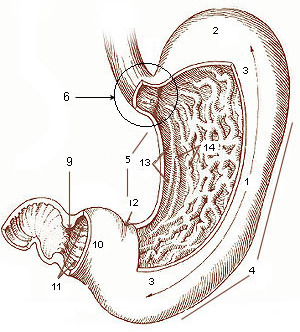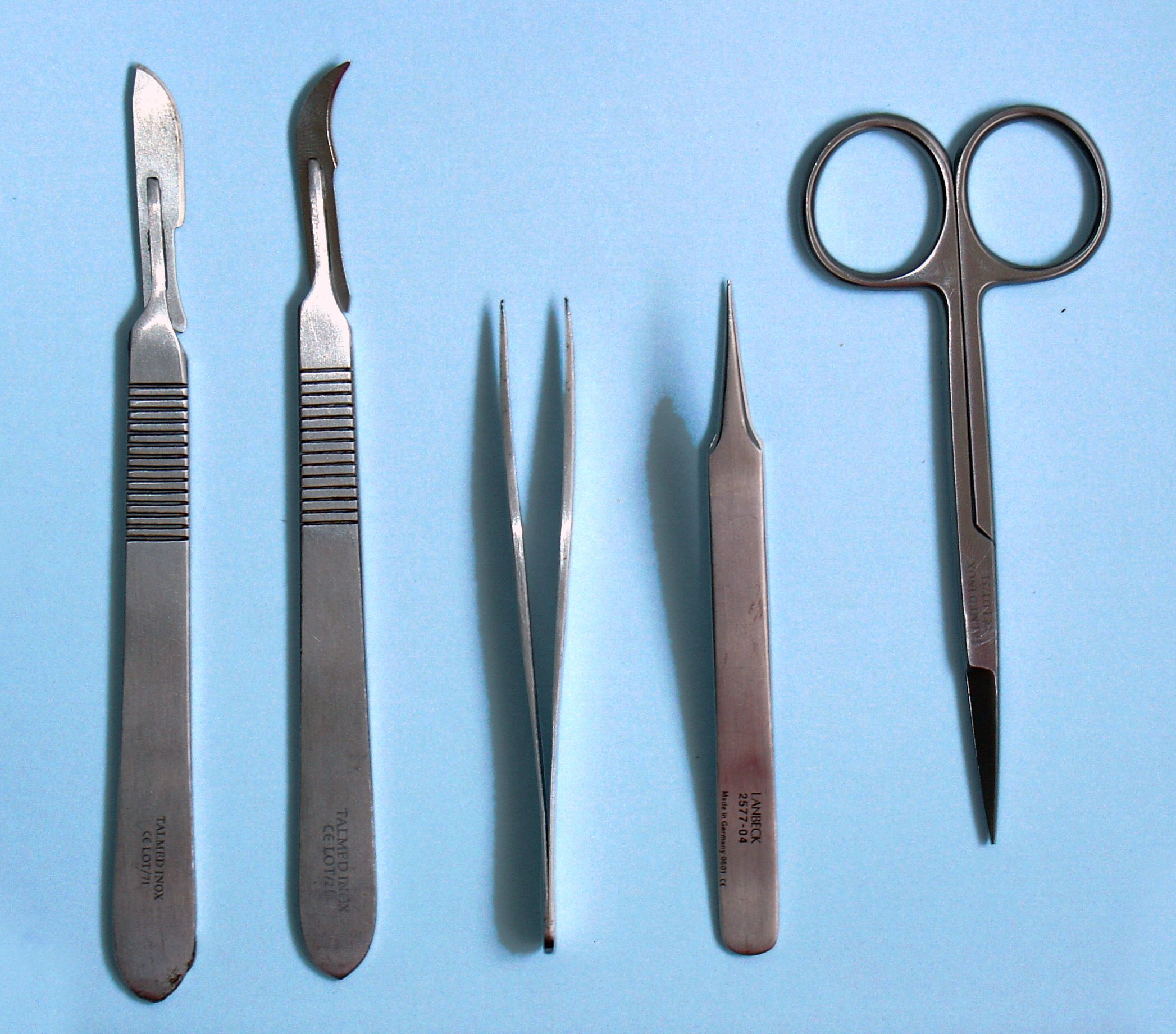|
Antonio Benivieni
Antonio di Paolo Benivieni (1443–1502) was a Florentine physician who pioneered the use of the autopsy and many medical historians have considered him a founder of pathology. Biography Early life and education Benivieni was born in Florence, Italy, on November 3, 1443. His father Paolo was a nobleman, notary and a member, alongside his wife Nastagia de’ Bruni, of a prominent and wealthy Florentine family from S. Giovanni. Their coat of arms had a silver moon with a blue background. He was the first of five children alongside Domenico, theology reader at the University of Pisa, and Girolamo, famous poet and scholar. At first he embraced the literary career and was a pupil of Francesco da Castiglione during his studies of Greek. Subsequently he abandoned this path to devote himself ''"ad philosophie ... et medicine secreta perscrutandum"'', continuing however to cultivate letters having the protection of the House of Medici: Cosimo il Vecchio and Piero il Gottoso. Benivieni' ... [...More Info...] [...Related Items...] OR: [Wikipedia] [Google] [Baidu] |
Florence
Florence ( ; it, Firenze ) is a city in Central Italy and the capital city of the Tuscany region. It is the most populated city in Tuscany, with 383,083 inhabitants in 2016, and over 1,520,000 in its metropolitan area.Bilancio demografico anno 2013, datISTAT/ref> Florence was a centre of medieval European trade and finance and one of the wealthiest cities of that era. It is considered by many academics to have been the birthplace of the Renaissance, becoming a major artistic, cultural, commercial, political, economic and financial center. During this time, Florence rose to a position of enormous influence in Italy, Europe, and beyond. Its turbulent political history includes periods of rule by the powerful Medici family and numerous religious and republican revolutions. From 1865 to 1871 the city served as the capital of the Kingdom of Italy (established in 1861). The Florentine dialect forms the base of Standard Italian and it became the language of culture throug ... [...More Info...] [...Related Items...] OR: [Wikipedia] [Google] [Baidu] |
Consilia
Consilia (plural of ''consilium'', 'advice') is a genre of book, originating in medieval era plagues, where practical advice is given on a medical or other philosophical subject. Origin The format was originated by the Florentine doctor of medicine Taddeo Alderotti, under the pressures for down-to-earth advice, based on experiential observations, in treating the Black Death that decimated Italy in 1348 and recurred at generational intervals for the following centuries. A ''consilium'' was a doctor's written text in response to a particular case, where the malady had been determined; in the ''consilium'' the medical doctor identified the disease and prescribed the appropriate treatment. The accumulation of ''consilia'' circulated in manuscript began, for the first time in Europe, to lay down a ''corpus'' of medical practice, case-by-case. Medieval medical writings had tended towards theory rather than praxis, which was denigrated as ''ars mechanica'', mere technician's work unsuit ... [...More Info...] [...Related Items...] OR: [Wikipedia] [Google] [Baidu] |
Megacolon
Megacolon is an abnormal dilation of the colon (also called the large intestine). This leads to hypertrophy of the colon. The dilation is often accompanied by a paralysis of the peristaltic movements of the bowel. In more extreme cases, the feces consolidate into hard masses inside the colon, called fecalomas (literally, ''fecal tumor''), which can require surgery to be removed. A human colon is considered abnormally enlarged if it has a diameter greater than 12 cm in the cecum (it is usually less than 9 cm), greater than 6.5 cm in the rectosigmoid region and greater than 8 cm for the ascending colon. The transverse colon is usually less than 6 cm in diameter. A megacolon can be either acute or chronic. It can also be classified according to cause. Signs and symptoms External signs and symptoms are constipation of very long duration, abdominal bloating, abdominal tenderness and tympany, abdominal pain, palpation of hard fecal masses and, ... [...More Info...] [...Related Items...] OR: [Wikipedia] [Google] [Baidu] |
Intestine Cancer
Intestine cancer may refer to: * Colorectal cancer * Small intestine cancer Small intestine cancer is a cancer of the small intestine. It is relatively rare compared to other gastrointestinal malignancies such as gastric cancer (stomach cancer) and colorectal cancer. Small intestine cancer can be subdivided into duoden ... See also * Gastrointestinal cancer {{disambiguation ... [...More Info...] [...Related Items...] OR: [Wikipedia] [Google] [Baidu] |
Stomach
The stomach is a muscular, hollow organ in the gastrointestinal tract of humans and many other animals, including several invertebrates. The stomach has a dilated structure and functions as a vital organ in the digestive system. The stomach is involved in the gastric phase of digestion, following chewing. It performs a chemical breakdown by means of enzymes and hydrochloric acid. In humans and many other animals, the stomach is located between the oesophagus and the small intestine. The stomach secretes digestive enzymes and gastric acid to aid in food digestion. The pyloric sphincter controls the passage of partially digested food ( chyme) from the stomach into the duodenum, where peristalsis takes over to move this through the rest of intestines. Structure In the human digestive system, the stomach lies between the oesophagus and the duodenum (the first part of the small intestine). It is in the left upper quadrant of the abdominal cavity. The top of the stomach lies ... [...More Info...] [...Related Items...] OR: [Wikipedia] [Google] [Baidu] |
Abscess
An abscess is a collection of pus that has built up within the tissue of the body. Signs and symptoms of abscesses include redness, pain, warmth, and swelling. The swelling may feel fluid-filled when pressed. The area of redness often extends beyond the swelling. Carbuncles and boils are types of abscess that often involve hair follicles, with carbuncles being larger. They are usually caused by a bacterial infection. Often many different types of bacteria are involved in a single infection. In many areas of the world, the most common bacteria present is '' methicillin-resistant Staphylococcus aureus''. Rarely, parasites can cause abscesses; this is more common in the developing world. Diagnosis of a skin abscess is usually made based on what it looks like and is confirmed by cutting it open. Ultrasound imaging may be useful in cases in which the diagnosis is not clear. In abscesses around the anus, computer tomography (CT) may be important to look for deeper infection. St ... [...More Info...] [...Related Items...] OR: [Wikipedia] [Google] [Baidu] |
Gallbladder
In vertebrates, the gallbladder, also known as the cholecyst, is a small hollow organ where bile is stored and concentrated before it is released into the small intestine. In humans, the pear-shaped gallbladder lies beneath the liver, although the structure and position of the gallbladder can vary significantly among animal species. It receives and stores bile, produced by the liver, via the common hepatic duct, and releases it via the common bile duct into the duodenum, where the bile helps in the digestion of fats. The gallbladder can be affected by gallstones, formed by material that cannot be dissolved – usually cholesterol or bilirubin, a product of haemoglobin breakdown. These may cause significant pain, particularly in the upper-right corner of the abdomen, and are often treated with removal of the gallbladder (called a cholecystectomy). Cholecystitis, inflammation of the gallbladder, has a wide range of causes, including result from the impaction of gallstone ... [...More Info...] [...Related Items...] OR: [Wikipedia] [Google] [Baidu] |
Giovanni Battista Morgagni
Giovanni Battista Morgagni (25 February 1682 – 6 December 1771) was an Italian anatomist, generally regarded as the father of modern anatomical pathology, who taught thousands of medical students from many countries during his 56 years as Professor of Anatomy at the University of Padua. His most significant literary contribution, the monumental five-volume ''On the Seats and Causes of Disease'', embodied a lifetime of experience in anatomical dissection and observation, and established the fundamental principle that most diseases are not vaguely dispersed throughout the body, but originate locally, in specific organs and tissues. Education His parents were in comfortable circumstances, but not of the nobility; it appears from his letters to Giovanni Maria Lancisi that Morgagni had ambitions to improve his rank. It may be inferred that he succeeded from the fact that he is described on a memorial tablet at Padua as ''nobilis forolensis'', "noble of Forlì", apparently by right ... [...More Info...] [...Related Items...] OR: [Wikipedia] [Google] [Baidu] |
Dissection
Dissection (from Latin ' "to cut to pieces"; also called anatomization) is the dismembering of the body of a deceased animal or plant to study its anatomical structure. Autopsy is used in pathology and forensic medicine to determine the cause of death in humans. Less extensive dissection of plants and smaller animals preserved in a formaldehyde solution is typically carried out or demonstrated in biology and natural science classes in middle school and high school, while extensive dissections of cadavers of adults and children, both fresh and preserved are carried out by medical students in medical schools as a part of the teaching in subjects such as anatomy, pathology and forensic medicine. Consequently, dissection is typically conducted in a morgue or in an anatomy lab. Dissection has been used for centuries to explore anatomy. Objections to the use of cadavers have led to the use of alternatives including virtual dissection of computer models. Overview Plant and ... [...More Info...] [...Related Items...] OR: [Wikipedia] [Google] [Baidu] |
Bologna
Bologna (, , ; egl, label=Emilian language, Emilian, Bulåggna ; lat, Bononia) is the capital and largest city of the Emilia-Romagna region in Northern Italy. It is the seventh most populous city in Italy with about 400,000 inhabitants and 150 different nationalities. Its Metropolitan City of Bologna, metropolitan area is home to more than 1,000,000 people. It is known as the Fat City for its rich cuisine, and the Red City for its Spanish-style red tiled rooftops and, more recently, its leftist politics. It is also called the Learned City because it is home to the oldest University of Bologna, university in the world. Originally Etruscan, the city has been an important urban center for centuries, first under the Etruscans (who called it ''Felsina''), then under the Celts as ''Bona'', later under the Romans (''Bonōnia''), then again in the Middle Ages, as a free municipality and later ''signoria'', when it was among the List of largest European cities in history, largest Euro ... [...More Info...] [...Related Items...] OR: [Wikipedia] [Google] [Baidu] |






